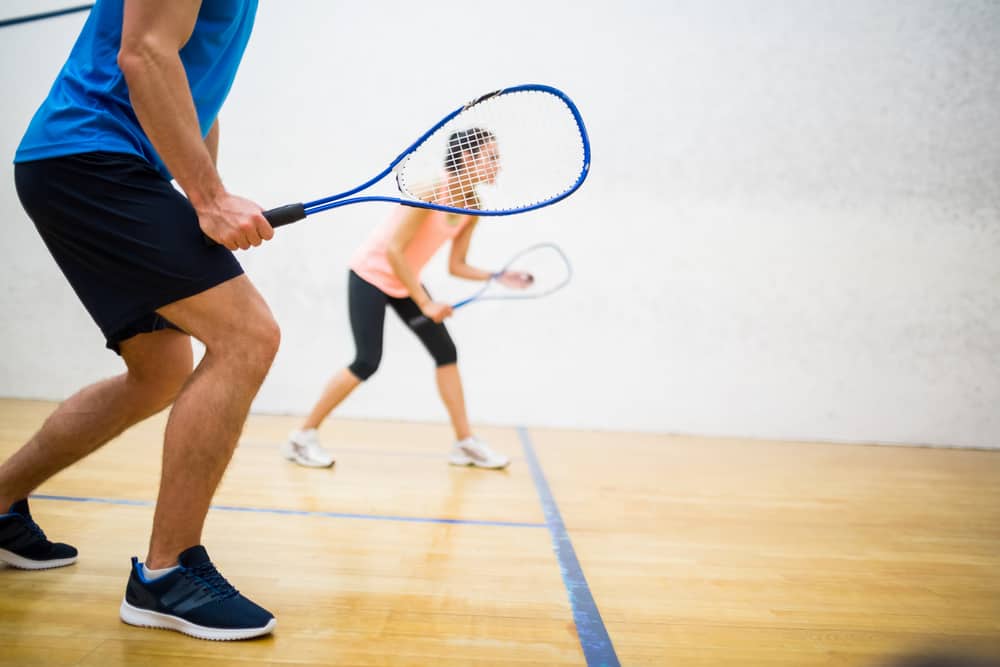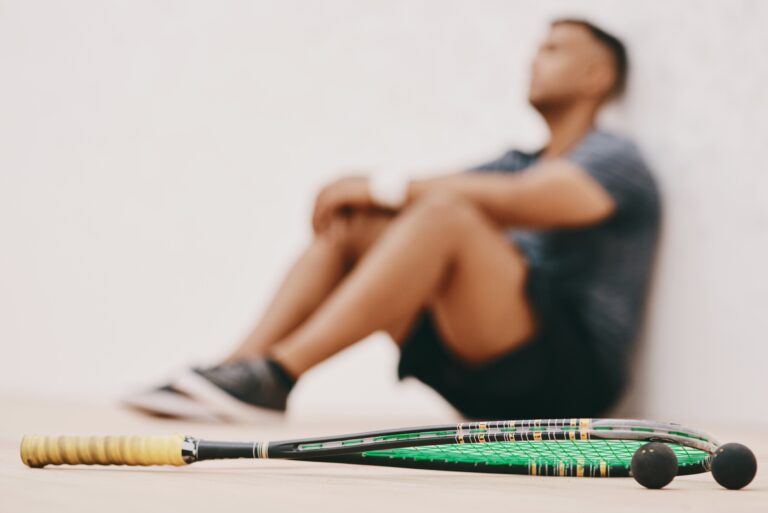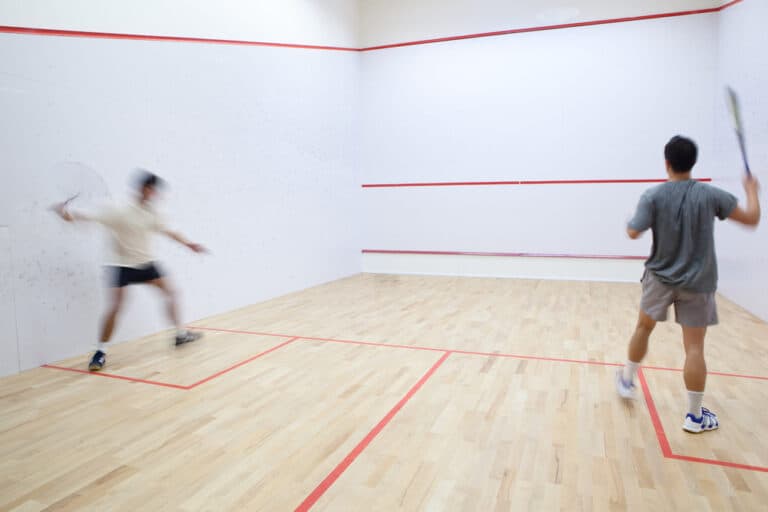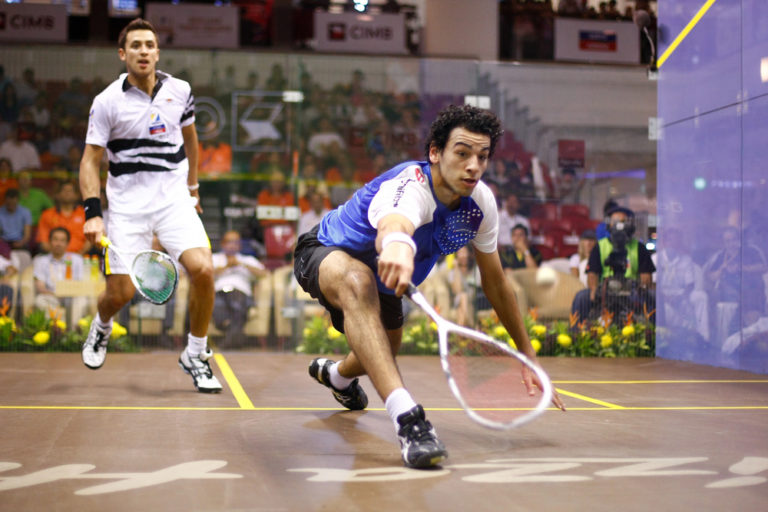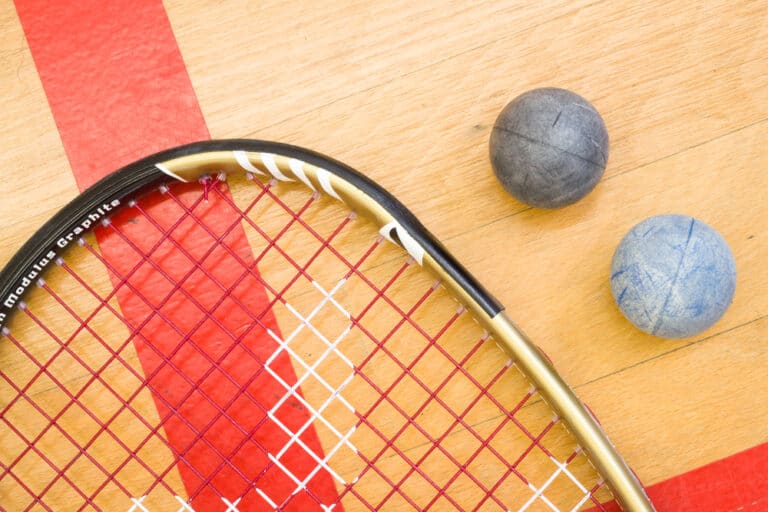Is Squash Easy For Beginners?
There are basic elements to any sport, and squash is no different; these things can be picked up quickly, especially if you have played racket sports before. Things such as racket control, how to hit the ball, and the basic necessity to be agile in your movements will count in your favor in this sport that was developed in the 19th century, but is still highly popular today.
Squash is simple enough to learn to play, but it takes incredible patience and dedication and a lot of practice and effort to become a good or great player. Review the rules and understand the game to make it easier for yourself. You need proper non-scuffing shoes, a racket, and balls.
There are other more high-end and advanced level tactics you will need to learn, but rather learn the basics first. Then you can advance to understanding the need to dominate the court, moving out of your opponent’s way, and how to win points to lead you to winning games ultimately. In this article, we will discuss the elements you should focus on and try to help you understand the game.
Distinguishing Whether Squash Is Easy For Beginners
Squash is a game that can be difficult to master, but it is easy enough to learn within a few sessions on the court. The first port of call is the type of ball that is used, it is not like those found in other racket sports, and there are also different types for the level of player ability.
You will note that players will warm up the ball before commencing a game, and this is because the ball does not bounce like the ones used in the sports such as tennis and pickleball. If you try to bounce a cold squash ball, it drops dead.
Squash is a game that you can walk onto the court and learn to play in your first session, but it will be a messy start, which is okay. Squash is a fast-paced game once you get the hang of it; at first, you will find that you are slow on the court, and the ball does not go or do what you want it to. So remember that just like any other sport or skill, it takes time and patience to get better.
Once you get the hang of it, you will start to consider factors such as what type of shot you are opting for, whether it is a winning shot or setting the play up so that your opponent plays a shot that is ideal for you to return. You will also get a grasp for the feel for how to return shots better, and you will begin to predict where the ball is likely to be played over time.
Ensure That You Have The Right Gear To Play Squash
Ensure that you have a proper squash racket to play with; if you do not have one, you will likely develop bad habits, or your overall play will be affected. You do not need to buy a top-of-the-range model, but trying to use something like a tennis racket in its place is going to make the experience quite unpleasant for you.
Some clubs even offer the option of hiring a racket and balls, so if you are only dipping your toes in the lovely metaphorical waters that is the game of squash, then you do not have to fully commit by going out and purchasing a racket.
Next up, it is good to ask someone who knows how to play squash well how you ought to hold the racket. You want to position your hands in a “V” shape where the racket fits between your thumb and other fingers; wrap them around firmly enough so that the racket cannot fly out of your hand, but also do not squeeze so tight that mobility becomes a difficulty.
Hitting Hard In Squash
One of the initial things that many beginner players fall into the trap of doing when it comes to squash is that they feel that they need to hit the ball as hard as humanly possible. This is not always the right move, especially if you are playing with the right type of ball for your skill level, which should be a ball with a blue dot that is intended for beginners.
Many beginners feel that if they do not hit the ball hard enough, it will not play as they desire, but all this does is send the ball bouncing off varying walls on the court, and you tend to lose control of the ball when you are hitting too hard.
Yes, there are times when smashing the ball is ideal, but you will get to learn when that is appropriate. To begin, just practice hitting it, so it comes off the front wall. You will also note that when you watch higher ranking players on the court, they vary the level of hardness that they strike the ball with, and this is because they are aware of where their opponent is on the court.
Your prime goal is to play the shot so that your opponent will not be able to return the ball to you properly. If you play a fast and hard shot, you will likely find that it gives the opponent ample time to get in position and return the ball as they like. Instead, aim for sneaky shots that play into the corners or are “drop shots” that hit the front wall and drop dead before the other player can hit it.
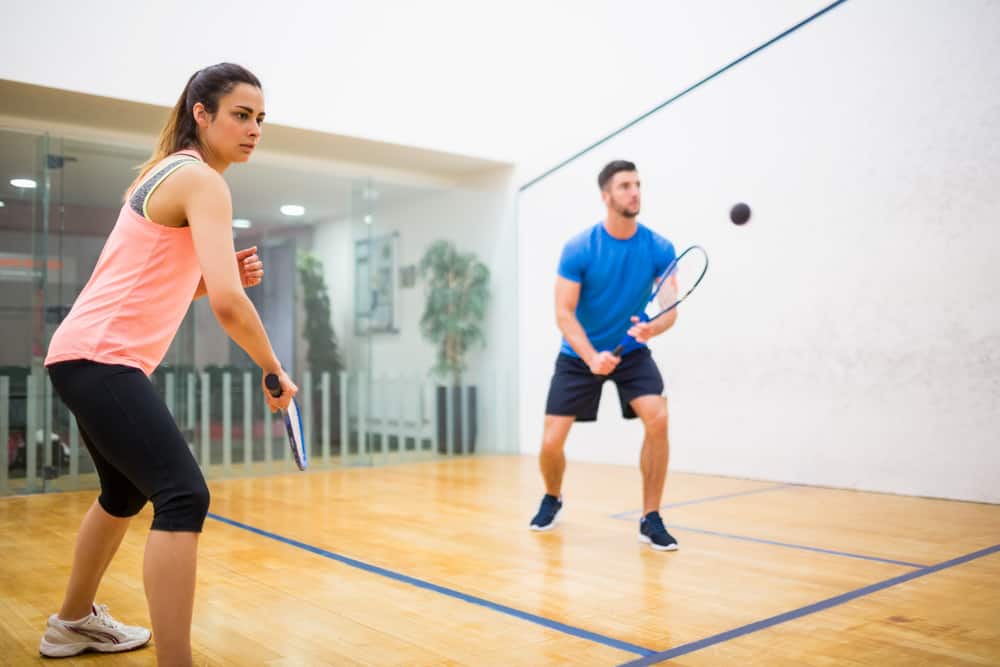
Understanding The Rules Of Squash
Squash is not like tennis or pickleball, where there can be doubles; instead, it is a two-player game; although practicing on your own is not a bad idea. The game begins with one player serving the ball from their serving square; they must play the ball against the far wall, and then it must land in the other half of the court, where the other player will then continue play.
The ball may only bounce once before being played, but this is not a requirement. The ball must make contact with the far wall for every shot, regardless of how many other walls it bounces off to reach this point. There are two lines, an upper and lower line on the front wall, and the ball must be struck between these lines for it to be considered in.
The ball will be considered out if it hits the bottom tin on the front wall or goes above the out lines. It is also “out” if it bounces twice on the floor before it is hit, and a fault is incurred if the service does not land in the correct area.
Practice Hitting The Ball To Improve Your Squash Game
The only way to get better at something, including squash, is to practice, and the primary focus of squash is to hit the ball against the front (far side) wall. A suitable manner of practicing is standing in position on the court and simply hitting it onto the front wall and doing it so that it comes back and bounces in front of you so that you can repeat the process.
Once you have done this and have figured out how to control the ball and when it lands up, you can advance to practicing different kinds of shots. Try placing it in certain areas and see what the result is. Play it off the sidewalls and notice where the ball lands when you start to mix up how you hit the ball.
Another vital part of squash is understanding how to play both forehand and backhand. You will find that while you are playing a game, at certain times, you cannot play forehand, and therefore acing your backhand as soon as possible is incredibly vital. Most players’ backhand is weaker than their front, so your opponent will try and force you into this.
Conclusion
Getting onto a squash court for the first time can be daunting, but you can pick up the sport relatively quickly, especially if you have a coach or someone who knows how to play guiding you along the way. It can be frustrating at first, as you will potentially struggle with hitting and controlling the ball, but with some patience and commitment, you will be playing rallies in no time.
References
- https://howtheyplay.com/individual-sports/A-Beginners-Guide-to-Squash-and-Tactics#
- https://www.wikihow.com/Play-Squash
- http://www.squashauckland.org.nz/Play-Squash/Beginners-Guide-to-Squash
- http://www.squashsa.asn.au/w/participation/basic-guide-to-squash
- https://www.sportsver.com/30-plus-must-know-squash-tips-for-beginners-with-pictures/
- https://racketsportsworld.com/squash-beginners-tips/

